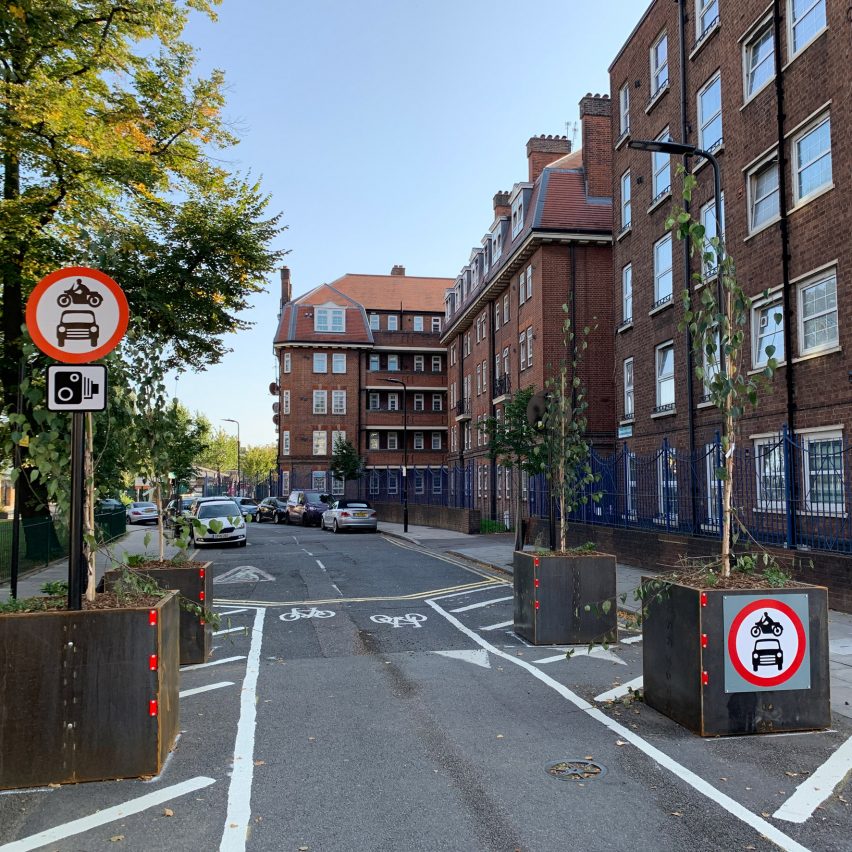
Hackney in east London is committed to reaching net-zero emissions by 2040 but some residents are up in arms about initiatives to reduce car use. Dezeen spoke to Jon Burke, the councillor charged with delivering the controversial programme.
"My mission is to completely transform, in the limited time that I've got, the way in which the borough functions across my portfolio areas to bring us in line with the finite limits of the planet," said Burke, who is the council's cabinet member for energy, waste, transport and public realm.
A former civil engineer appointed to the role by Hackney mayor Philip Glanville in 2016, he claimed the borough has "established the leadership position" among urban councils for its ambition.
Burke's job is to ensure that the Hackney, which is one of the 10 most deprived boroughs in the country, meets the ambitious decarbonisation targets it set following its declaration of a climate emergency last year.
Zero emissions by 2040
These involve a 45 per cent cut in emissions against 2010 levels by 2030 and delivering zero emissions by 2040, which is ten years earlier than the UK government's target.
This will be achieved through measures including investment in renewable energy, the UK's largest urban tree-planting scheme, encouraging electric-car use and reducing vehicle journeys.
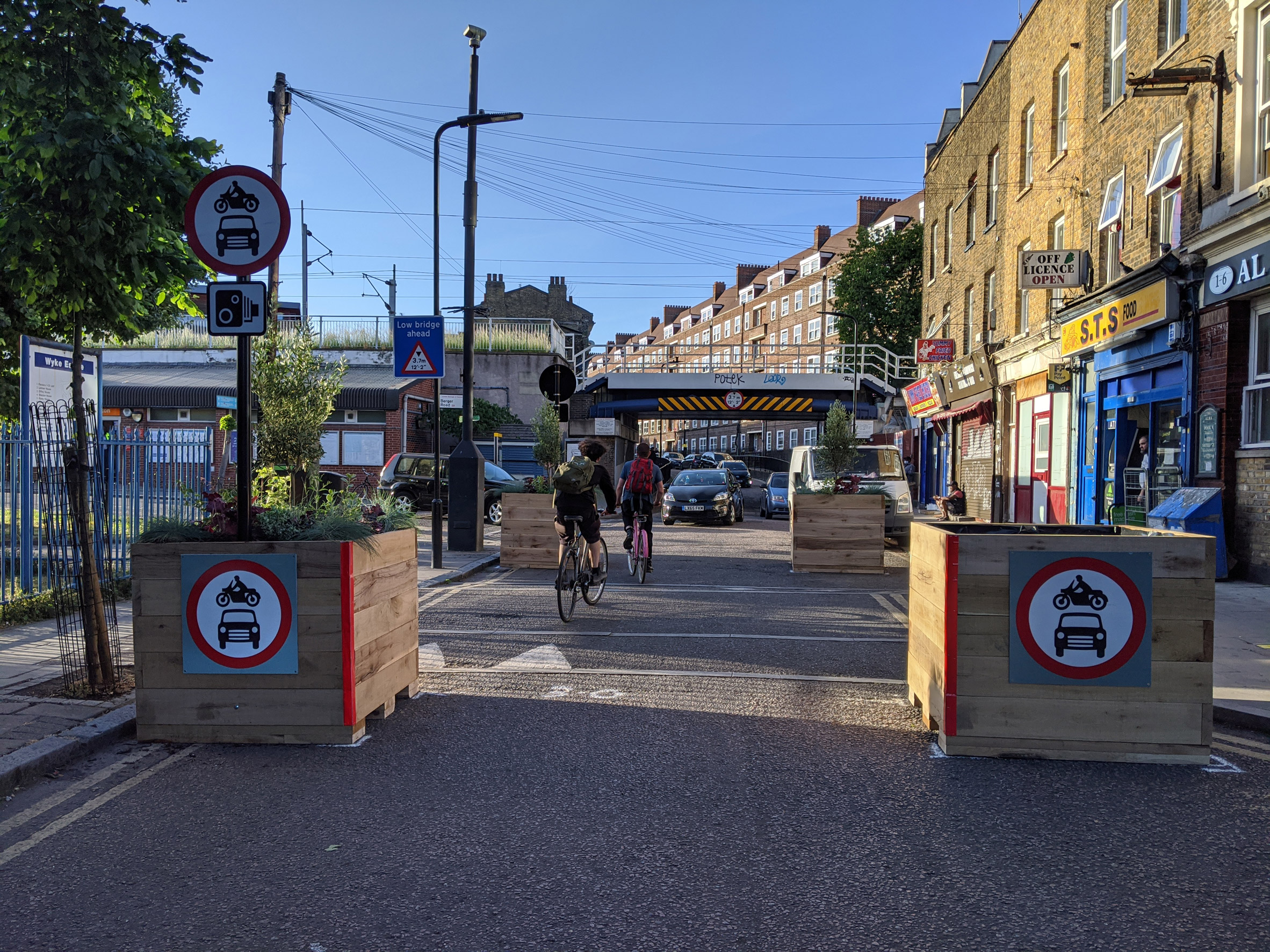
The latter has proved particularly controversial, with planters and bollards installed as part of the Low Traffic Neighbourhoods initiative to prevent rat-running (cut-through driving to avoid traffic) in residential streets becoming the targets of protests, graffiti and vandalism.
Burke himself is frequently abused on social media by angry motorists who have been inconvenienced by the changes.
"F*ck off, get the f*ck out from Hackney you d*ckhead!" tweeted one protester angered that road closures added an additional nine minutes to his journey home. On the day this article was published, Burke revealed that he had received a death threat from an irate motorist.
"Open all roads now or we will get violence," wrote the anonymous author of the note sent to Burke. "We intend to burn down your house while you are sleeping".
Planter vandals to be prosecuted
"You've got to be led by what you know is good practice and what will work but you've also got to have the guts to deliver that in the teeth of opposition," said Burke, who is notoriously combative with his critics on Twitter.
He recently promised to install CCTV to catch planter vandals in action: "When we catch you, we'll prosecute," he tweeted.
Under Burke, the council has established Hackney Light and Power, a publicly owned energy-services company, to drive the move away from fossil fuels.
Earlier this year the council switched all its own power consumption to renewable sources and earlier this month it completed its first photovoltaic scheme, which will power West Reservoir Centre, a leisure building in the borough.
In the longer term, Burke aims to turn the borough into a decentralised urban power station by installing solar panels on rooftops of council-owned housing across the borough.
Hackney could become "leading urban power generator"
"There's huge potential for us to go further because Hackney Council owns 50 per cent of the residential roof space in the borough," he said. "The potential for us to turn Hackney into a leading urban power generator is significant."
Trees play a major role in Burke's plans: he aims to cover at least 40 per cent of the 19-square-kilometre borough with a tree canopy featuring 10,000 new trees to cool streets, sequester carbon and increase biodiversity.
"There is a huge body of literature out there that makes it abundantly clear that trees and other forms of green infrastructure have a powerful mitigatory effect on the consequences of the effects of warming cities," he explained.
"One medium-sized street tree, when you take into account evaporative cooling and shading, has the same atmospheric cooling effect as ten room-sized air conditioning units operating 24 hours a day."
"Most diverse tree canopy"
Half the trees being planted are native varieties, to retain biodiversity, giving the borough "the most diverse tree canopy in the country outside Kew Gardens".
"A London plane, which is native to Granada in southern Spain, supports no insects whatsoever," he said. "On the other hand, a lime tree I think will support up to 300 different species of aphid."
Burke's programme will also see paved areas broken up and given over to greenery to counter the urban heat island effect and to allow rainwater - which is likely to increase in intensity as climate disrupts weather patterns - to soak away rather than overwhelming drains.
"You need to reach a minimum of 40 per cent canopy cover on the street and you need to start systematically breaking open areas of hardstanding and creating a large number of new rainwater gardens and larger tree pits," he explained.
Concrete and asphalt act as "giant storage heater"
"Hardstanding in the city is just basically a giant storage heater and that has an effect on overnight temperatures," Burke said.
Many of Hackney's 280,000 residents have no outdoor space of their own and are reliant on public open space. This became particularly apparent over the summer when Hackney's parks filled up as the hot weather, combined with Covid-19 restrictions, left people with few other options for enjoying time outdoors.
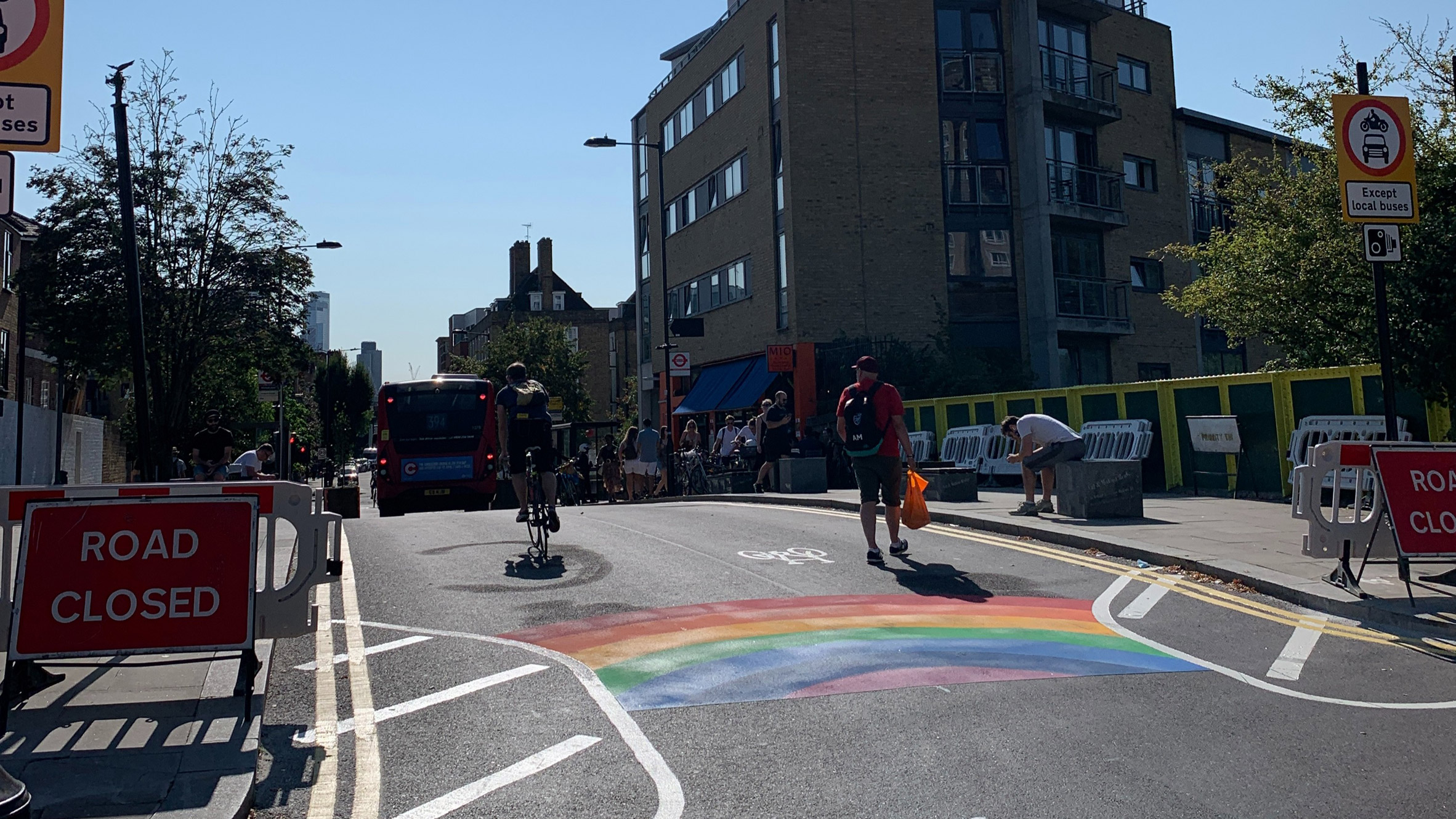
Moves to clamp down on the resulting anti-social behaviour such as littering and urinating caused friction at the time but in the longer term, the experience has shown that London will need more public space in future.
"The social-norm vacuum that's been created by coronavirus has encouraged people to behave in ways that I do not imagine they would have behaved previously in parks and green spaces," Burke said. "The fact that large numbers of people have been at home meant that there are more people in green spaces."
More green spaces planned
Burke said that the pandemic has upturned development models for the capital, which are based on the notion that 20 per cent of the population will be away from the city at any given time.
"What coronavirus demonstrated is that this isn't sufficient," he said. "So we will be able to deliver an increase in green space in the borough by literally becoming groundbreakers and tearing up the roads."
By far the most contentious part of Burke's programme is the drive to reduce car use across the borough. This is driven by health, safety and lifestyle concerns, as well as to reduce emissions: Hackney has the sixth-highest mortality rate from air pollution of any borough in the country and the highest pedestrian and cyclist mortality rate in London.
Yet just 30 per cent of Hackney households own a car – a figure that has declined from 51 per cent in 2001 – while around half of all car journeys in the borough are made by people on their way to and from other areas.
Half of car journeys add "zero value" to borough
"Almost half the motor vehicles on our streets at any one time are cars that are passing through Hackney and adding zero value to the life of the borough," Burke said. "So it's my job to help minimise that."
Hackney has committed to installing at least one electric vehicle charging point on every residential street and waives parking-permit charges for electric cars.
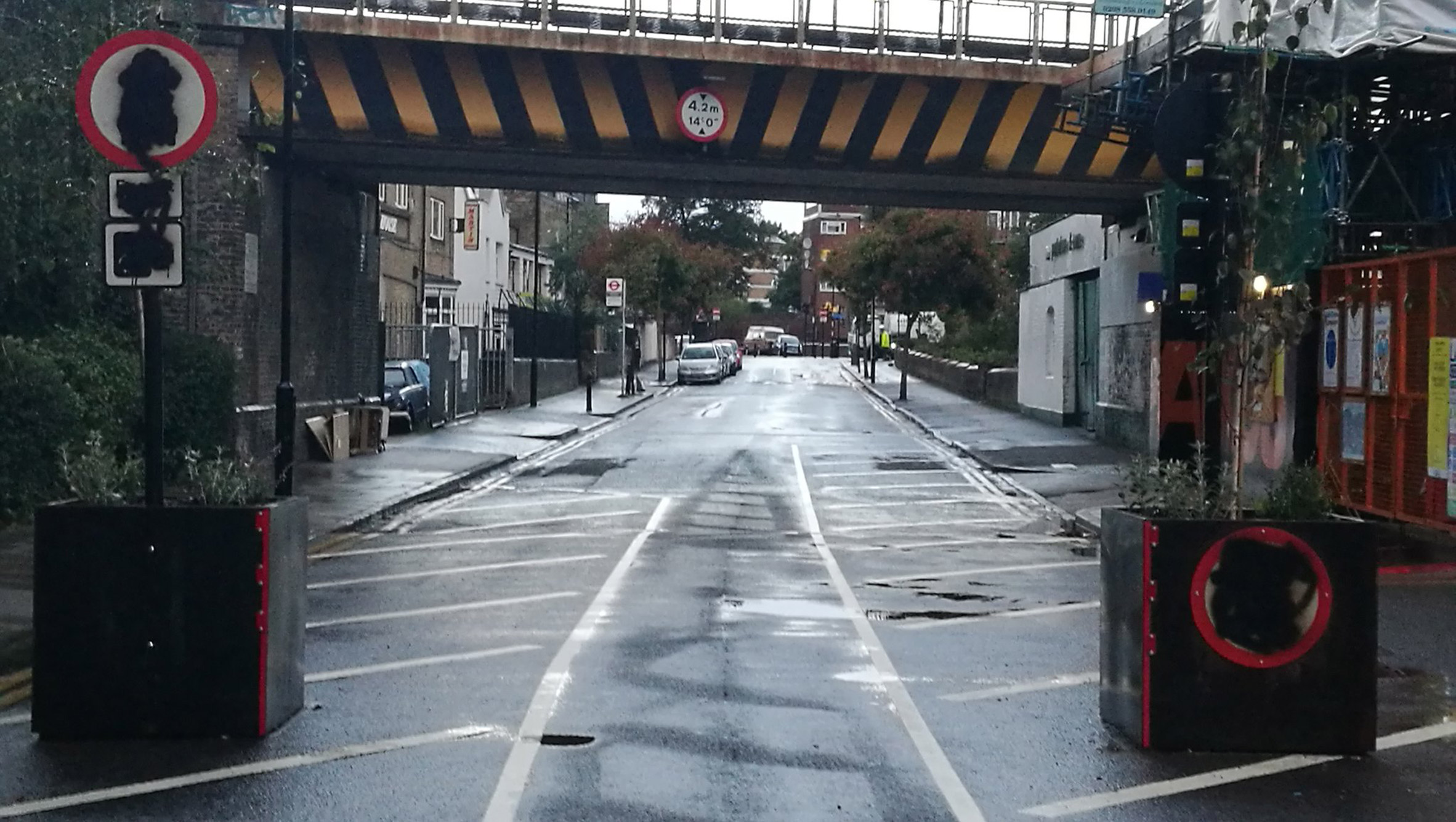
But electric cars are still cars, taking up road space and potentially causing accidents. The plan is to encourage people to walk, cycle or use public transport instead of getting into private vehicles.
"I'm putting plans in place that will make it attractive for people to divest themselves of their car over time," Burke said.
"Complete delusion"
Yet Burke rejects the approach adopted by some boroughs, who have focussed on delivering better cycling infrastructure in the hope of tempting people to use bikes instead of cars.
" I think that's a complete delusion," he said. "As a solution, it's gonna leave residents bitterly disappointed because cars have a huge cultural and psychological hold on people. The idea that the guy who's driving down the road in a huge Range Rover with tinted windows and his arms hanging out the window is not cycling into town because there isn't good enough infrastructure I think is a bit naive, frankly."
"Ultimately, the motor vehicle will remain part of urban life. The vision for the role of the motor vehicle is characterised as being smaller, slower, cleaner and fewer," he added.
Low Traffic Neighbourhoods, which blossomed around the country earlier this summer when central government provided councils with £250 million of funding to promote "active travel", have been introduced in Hackney to discourage cars from cutting through residential streets.
Controversy over LTNs
Streets are closed to vehicles at one end using "modal filters" that allow pedestrians and cycles through, displacing non-local traffic to main arteries.
Their introduction comes at a time when people are abandoning public transport in favour of cars due to Covid-19, and when the increase in the cost of the Congestion Charge in central London has pushed more vehicles to surrounding areas.
Yet LTNs have been perceived by many as the reason for increased congestion on the roads. Residents have launched campaigns against LTNs and some councils have already scrapped them in the face of protests.
"One of the challenges is the potential for those vehicles to be displaced onto main roads but we're looking at this problem from the wrong end of the telescope," Burke argues.
"Main roads are for vehicles to pass through. And what has happened is we have created a road network that does not have sufficient capacity to accommodate all the cars on the network. What we have done over the decades is we have allowed our residential areas to become a kind of pressure release valve for the main roads."
Reducing cars "shouldn't be a radical statement"
"The answer for that problem is not to open up residential streets and allow them to accommodate even more cars," he concluded. "The answer is to deliver holistic approaches to reduce the overall number of cars. That shouldn't be a radical statement."
As pass-through drivers adapt to the new conditions and avoid Hackney, neighbouring boroughs will see more traffic, forcing them to introduce similar measures themselves until people stop using cars.
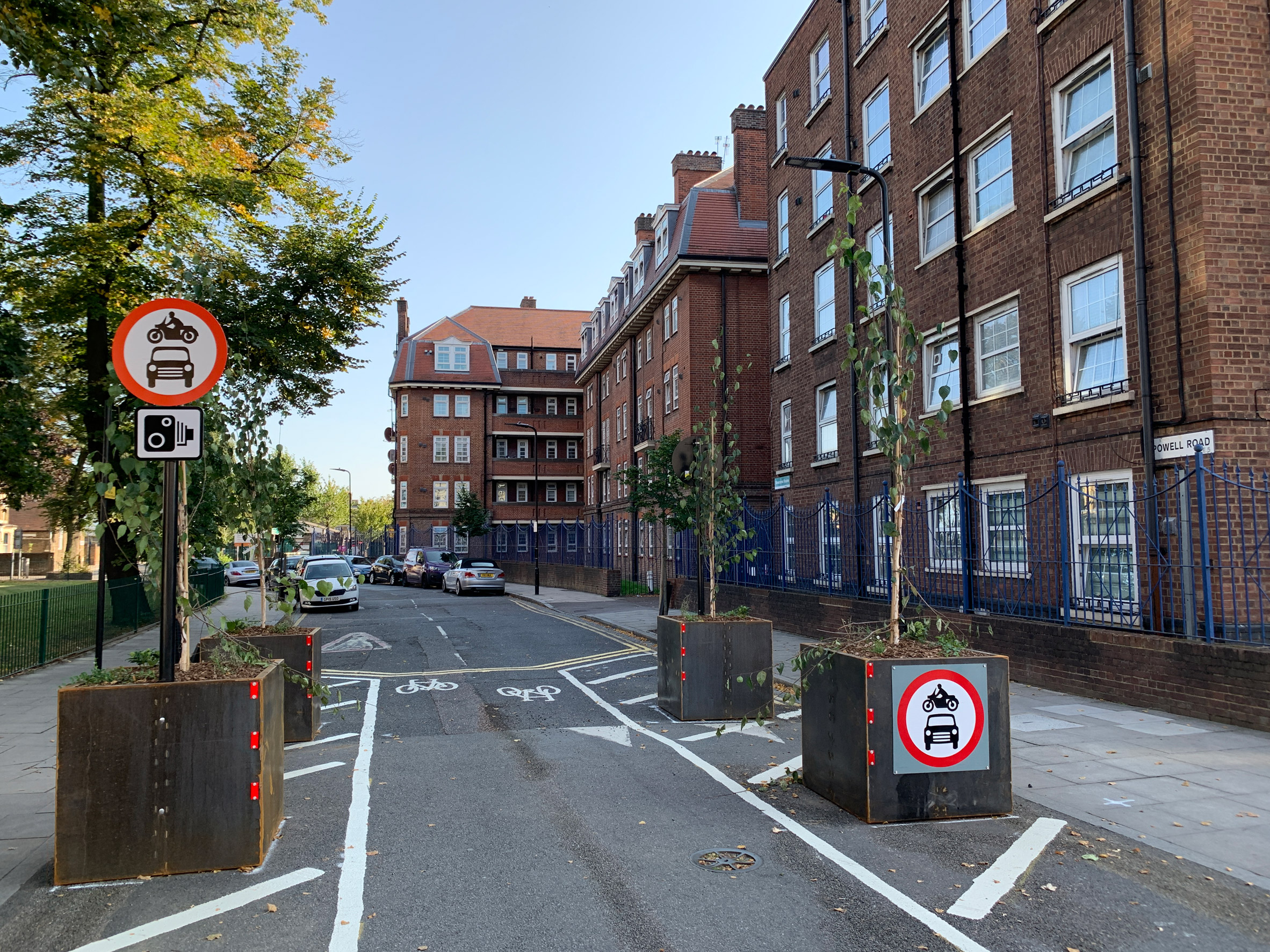
"I can't come in and solve Haringey's transport issues," Burke said. "I can't solve Tower Hamlets' transport issues. My job is to reduce the amount of through traffic coming through Hackney. It does have a displacement effect on neighbouring boroughs and those boroughs will have to deal with the fact that there are too many motor vehicles and they'll have to take action and it will have a cascade effect across London."
Hackney Council is also considering introducing its own congestion charge and imposing a tax on workplace parking spaces.
Local congestion charge being considered
"Boroughs have some, if not entirely unilateral, powers to go forward with congestion charging and workplace parking levies," Burke said. "One of the things we're producing a feasibility study for at the moment is the possibility of local congestion charging."
Hackney's initiatives come at a time when, despite legislating to reduce UK carbon emissions to zero by 2050, the national government has announced a new £29 billion road-building programme.
Meanwhile, the Greater London Authority, the body headed by mayor Sadiq Khan that oversees the city's transport strategy, is pushing ahead with plans for the £1.2 billion Silvertown Tunnel project, which will see a new road tunnel built beneath the Thames. This is despite the fact that the GLA declared a climate emergency in 2018.
"If you build roads, cars will fill them"
"They [the GLA] have done some really good stuff in transport but their investment plans are driven by people who do not understand induced demand," Burke said. "If you build roads, cars will fill them. There is no mechanism through the construction of roads to reduce the number of cars on those roads."
Burke called on the mayor's office to scrap the scheme. "City Hall needs the moral courage to turn around and say we've invested a lot of money in this, but we recognise that it's incompatible with the pathway that we've set ourselves."
"Seemingly the rest of the political class just kind of rolling over and accepting that's inevitable, Hackney is here to demonstrate there are different ways of doing things," Burke said.
"There are different ways of doing things that will manifestly increase people's sense of health and wellbeing."
Photography is by Hackney Council.
The post Hackney Council to "completely transform" its energy, transport and public space to meet zero-carbon target appeared first on Dezeen.
from Dezeen https://ift.tt/3mKDYRo

No comments:
Post a Comment